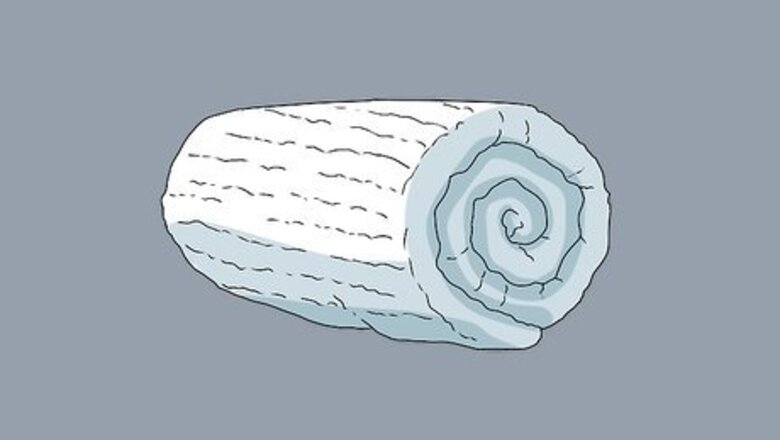
views
Adding Cushioning
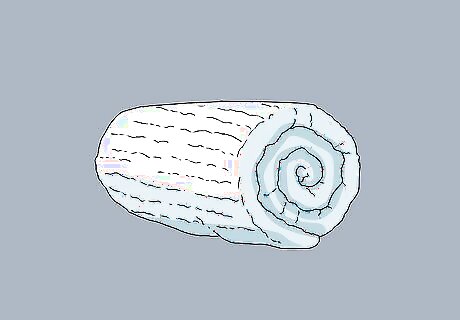
Use rolled-up towels or blankets as cushions. One of the oldest, simplest, and most effective ways to make a pair of crutches more comfortable is to make improvised cushions from spare pieces of fabric. There's no "right" fabric for the job—you can use towels, pieces of an old blanket, or even small pillows. Below is an example of how you might do this for a pair of crutches: Cut out 2 3 feet (0.91 m) by 3 feet (0.9 m) pieces of an old blanket. Roll both pieces of fabric into loose rolls that are slightly wider than the top portions of the crutches. Use a sturdy tape (like packing tape or duct tape) to tape each roll over the top of one of the crutches. Tape the fabric in place tightly—if it slides around while you move, it can affect your posture and lead to further discomfort.
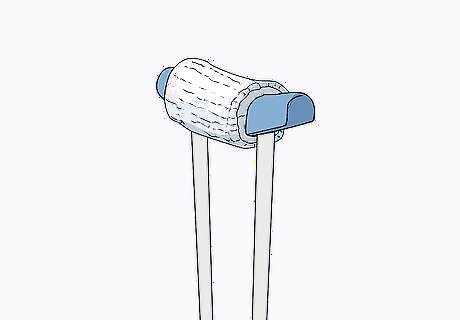
Put cushioning underneath the current crutch pads, if present. Many crutches come with a removable foam pad on top that's meant to fit under your arm. Another way to add cushioning to an uncomfortable set of crutches is to take these pads off, stuff them with cushioning material, and put them back on. This may be difficult or impossible for some crutches, so be careful not to damage your crutches by forcing the pads off or on. You can use wadded-up fabric to cushion your crutches in this way, or other materials like cotton, stuffing from an old comforter, and so on.
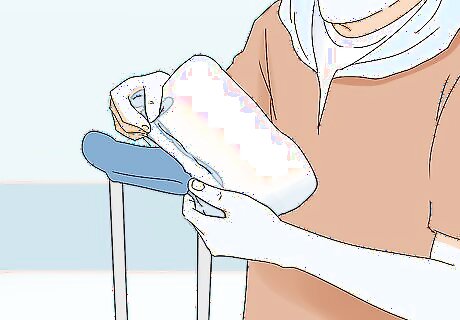
Invest in a set of commercial crutch pads for greater comfort. It's no secret in the medical community that crutches can be uncomfortable. Because of this, there is a small market for cushioning devices that can be used to make crutches more comfortable. These are usually made from foam, gel, or a breathable fabric material and are reasonably affordable—a complete set often goes for about $30. You can purchase basic crutch accessories at many pharmacies, but for a better selection of products, it may be wiser to go online, where you have access to a huge variety of materials, sizes, patterns, and so on. Shopping online, you can even buy high-fashion crutch pads, like sets made from faux fur.
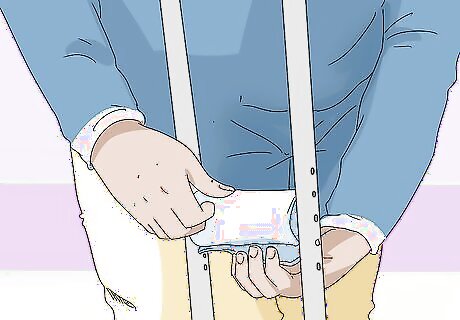
Cushion the grip areas as well, if needed. Your underarms aren't the only parts of your body that can get sore when you're using crutches. Since you're supporting much of your weight on your palms, it's also common for the hands to start hurting during crutch use. Luckily, cushioning the grip bars can reduce this discomfort somewhat. You can use improvised cushions (taped towels or rags) or commercial pads for this. However, the latter may be the be the better choice, since it's important that you're able to have a firm grip on your crutches to avoid a fall. Many commercial crutch pads feature ergonomic materials and shapes designed to give you a better grip on the crutches. Cushioning the grip area can be even more important on forearm crutches, since these put more of your weight on your hands.
Using Your Crutches Comfortably
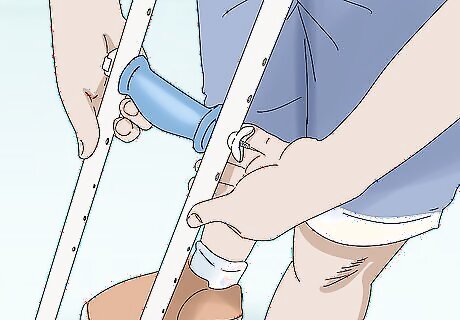
Adjust your crutches to the correct height. Even cushioned crutches can be a pain to use if they don't fit you properly. Luckily, nearly all modern crutches have easy-to-use telescoping portions that allow you to adjust the height. The proper height for your crutches depends on how tall you are and what kind of crutches you use. For example: Underarm crutches: Wear the shoes that you use for day-to-day life and stand upright. Slide the crutches under your arms and put the tips a few inches or centimeters in front of your feet. Adjust the crutches so that they rest just 1–3 inches (2.5–7.6 cm) beneath your armpits. A friend can help here. The crutches should not jut up into your armpits. Forearm crutches: Wear the shoes that you use for day-to-day life and stand upright. Slide the crutches onto your arms and grasp the handles. Flex your elbow so that the inside of your wrist is level with your hip at about a 30° angle. Adjust the crutch so that it touches the floor in this position. The armrest should support the largest part of your forearm and the handle should be level with your wrist.
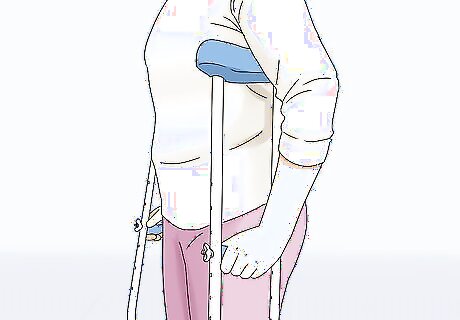
Make sure you're holding the crutches correctly. Wrist or hand pain can be a sign that you're holding the crutches in a way that puts unnecessary stress on these parts of your body. Using proper grip form should minimize this pain. When using either underarm or forearm crutches: You should maintain a slight bend in your elbows while you use your crutches. Your forearms should be straight from the elbow through the wrist. Don't curl your wrists as you use the crutches.
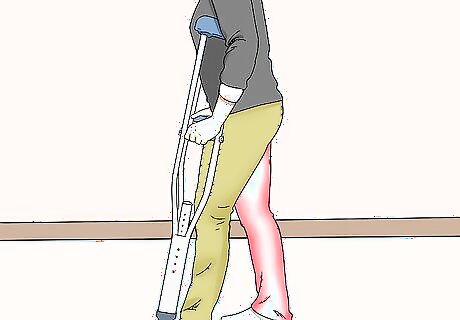
Pay attention to your gait. Having an off-kilter gait when walking normally can be a sign of other underlying problems and can lead to persistent, long-lasting pain. These problems are exacerbated when using crutches, which modify your normal gait by design. Maintaining proper posture throughout the walking motion is crucial to your ongoing comfort. While there are some differences in proper gait depending on the type of crutches you use, similar rules apply for the most common types. For example: Underarm crutches: Grasp the crutches securely. Stand on your uninjured leg and set the crutches 1 step ahead. Lean forward as you use the crutches to swing yourself forward. Land on your uninjured leg about a step ahead of where your crutches touch the ground. Swing the crutches forward and repeat. Keep your injured leg off of the ground at all times. Forearm crutches: Grasp the crutches securely. Stand on your uninjured leg and set the crutches 1 step ahead. Lean forward, put your weight onto the crutches, and swing your body forward. Use your forearms to maintain your balance and control during the swinging motion. Land on your uninjured leg about a step ahead of where your crutches touch the ground. As with underarm crutches, keep your injured leg off of the ground at all times.
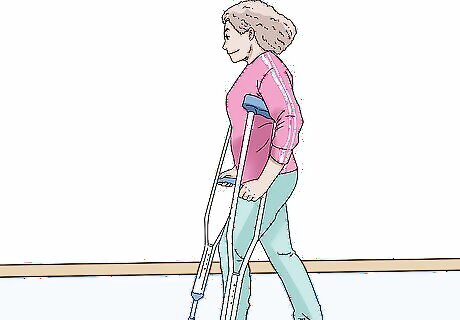
Let your body "follow through" with each step. Taking steps with a set of crutches can take some getting used to before you're able to do it in a way that doesn't put any unnecessary stress on your joints. As you make contact with the ground, landing on your uninjured foot, try to keep your joints (especially your elbows and the knee on your uninjured leg) "loose" without collapsing your posture. Allowing your joints to bend slightly with each step will take some of the stress of walking off of them, preventing discomfort. You don't want to have stiff or locked joints when you make contact with the ground. This increases the physical impact your joints feel with each step and will quickly cause soreness.
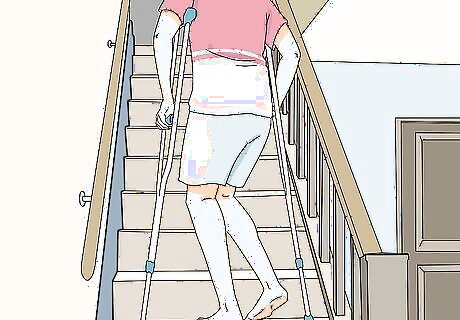
Take extra care on stairs. It's no wonder that certain everyday tasks become extra-hard when you're using crutches. Knowing the proper way to go about doing these tasks won't just keep you more comfortable—it will also minimize the chance for injuries. For instance, climbing a set of stairs can be harrowing on crutches, so use the following mnemonics to help you remember how to accomplish this task: Step on the GAS going up. First, step with your Good leg, then lift your Affected leg, then move your Sticks Let yourself SAG going down. First, move your Sticks, then move your Affected leg, then step with your Good leg.


















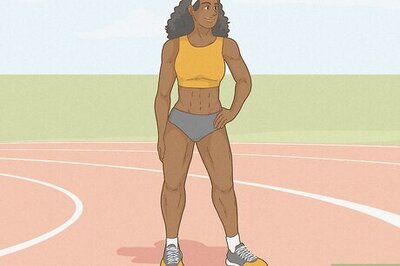
Comments
0 comment